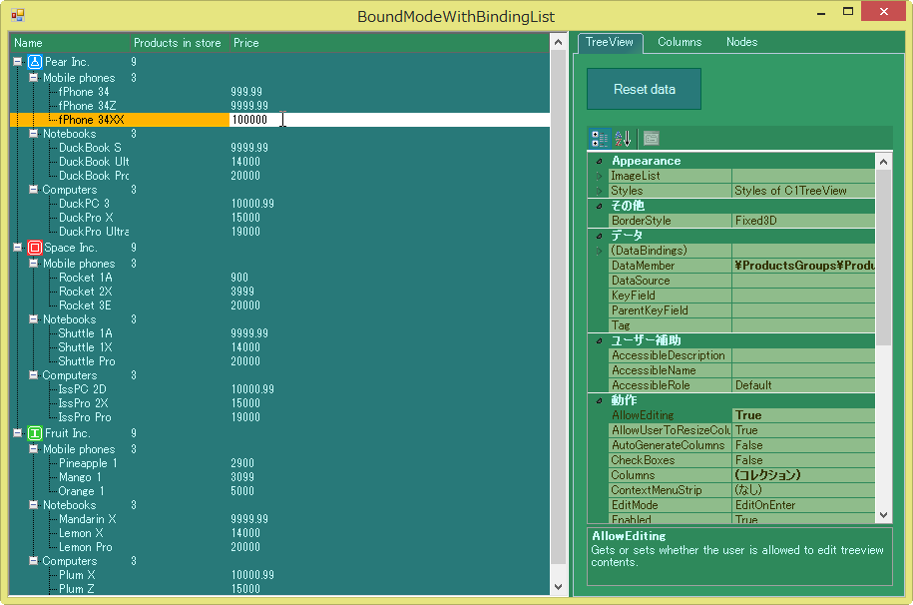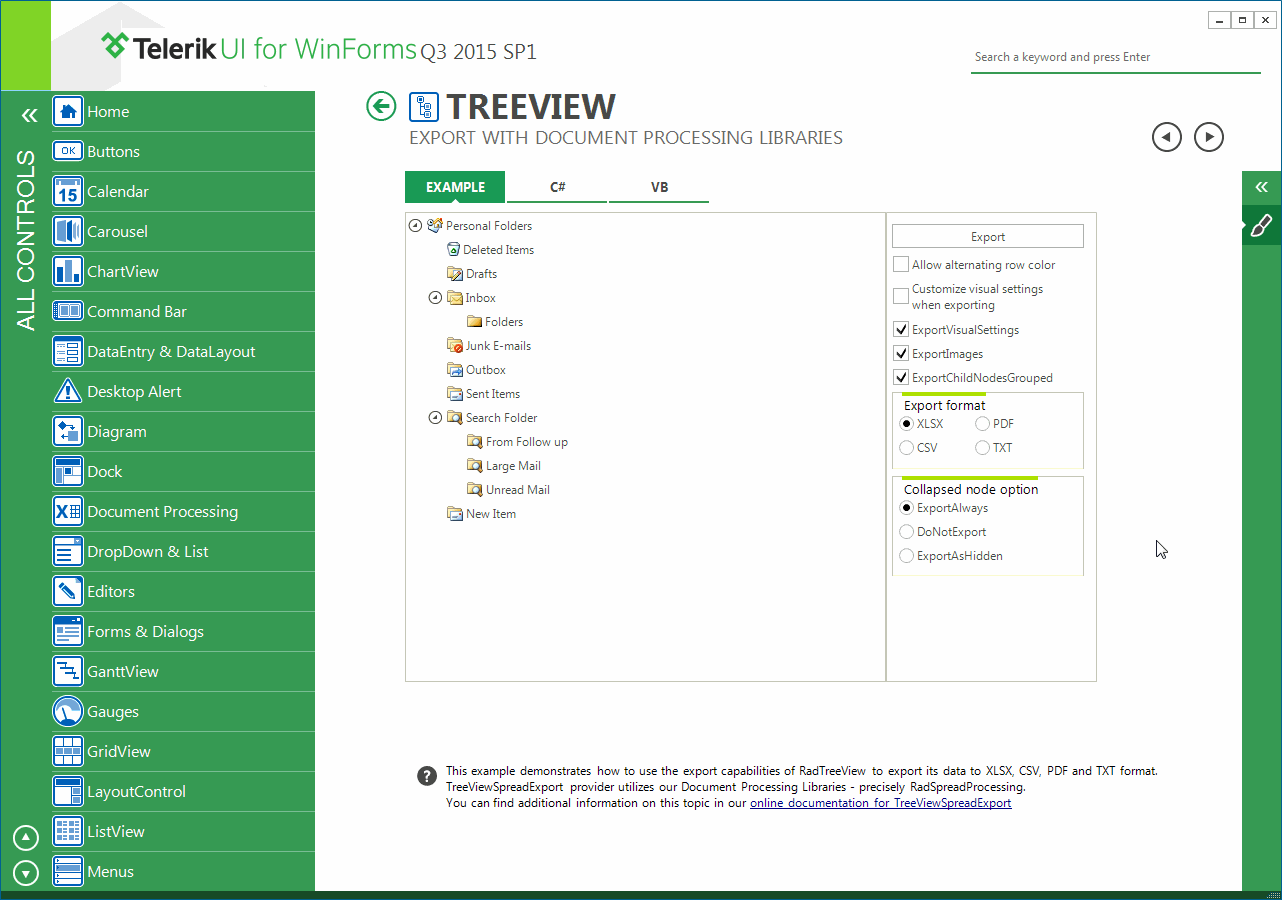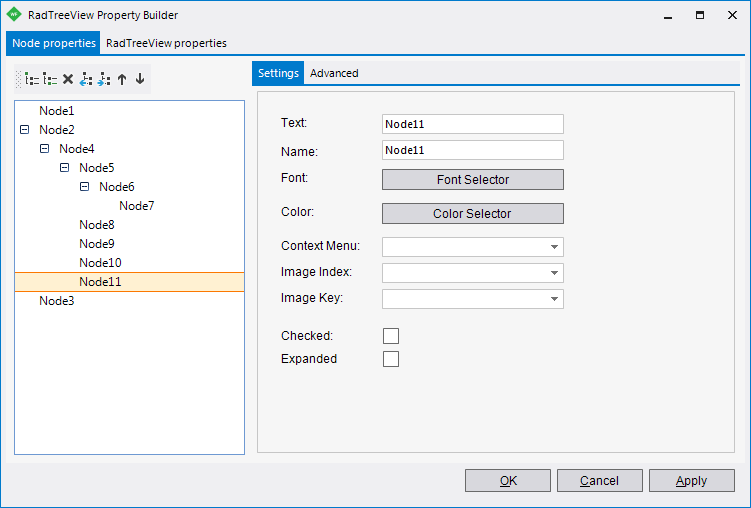
He is also moderator on the Official Hey, Scripting Guy! Forum and a regular speaker at BangaloreITPro User Group meetings.
#TREEVIEW WINFORMS WINDOWS#
He writes regularly on his blog about topics related to Windows PowerShell, SharePoint, and Microsoft server virtualization. He loves automation and is a Windows PowerShell fanatic.
#TREEVIEW WINFORMS FREE#
This approach is generic, but it can be easily customized, so you are free to modify to add conditionals to filter by data and other stuff.Today we have a guest article by Ravikanth who works at Dell, Inc., as a lead engineer in the SharePoint Solutions Team. InTreeNode.Text = (inXmlNode.OuterXml).Trim() Īs mentioned at the beginning of the article, this approach works with every structure of XML, just load a random file and it will be rendered in the Tree View. type of node, whether attribute values are required, and so forth. Here you need to pull the data from the XmlNode based on the Populate the TreeView with the DOM nodes.įor (i = 0 i <= nodeList.Count - 1 i++)

String xmlString = File.ReadAllText(filepath, Encoding.UTF8) Private void RenderXMLFile(string filepath) This.RenderXMLFile(saveFileDialog1.FileName) If (saveFileDialog1.ShowDialog() = DialogResult.OK) SaveFileDialog1.Filter = "XML Files (*.xml)|*.xml" OpenFileDialog saveFileDialog1 = new OpenFileDialog() Private void Button1_Click(object sender, EventArgs e) / appear, allowing you to pick an XML file to render in the treeview / When the user clicks on the Load XML button, an open File Dialog will If the node has child nodes, the function will call itself. Add the nodes to the TreeView during the looping process. Loop through the XML nodes until the leaf is reached. Private void AddNode(XmlNode inXmlNode, TreeNode inTreeNode) Recursive if inside the node there are more child nodes. / Renders a node of XML into a TreeNode. The helper method AddNode is the following one: /// This.AddNode(dom.DocumentElement, tNode) Populate the TreeView with the DOM nodes with the helper 'AddNode' function Create an instance of the first node in the treeview (the one that contains the DocumentElement name) will be the DocumentElement name as any content must be wrapped in some node first.

Create the root tree node, on any XML file the container (first root) Clear any previous content of the widget

and attached to the form or you can just drag and drop the widget from the toolbox Create a XML DOM Document and load the data into it. This must be done manually, so add the node to the treeView with Node.Add and then, store this node into a variable that we will provide as argument for the helper method AddNode: try In our logic, we will add this node as well and it will contain basically all the nodes of the file. On the previous XML file, the document name is urlset, and so on with other xml files. Now, as you know, on every XML file there's a document name that defines what's the file about, for example: As next, create a new structure of a XmlDocument with the string XML data that you have using the LoadXml method from the created instance.Īs we assume that you may have already some data in the treeView, we will clear all nodes previous to the render process using the Nodes.Clear method of the TreeView.

#TREEVIEW WINFORMS HOW TO#
As first step, you need to create a variable that contains the XML string, this can be obtained either from a local or remote source, so it's basically up to you how to retrieve the data from the XML file that you want to render. In this example, we will have a treeView1 variable that represents a TreeView component added to the form by Drag & Drop from the toolbox. In this article, we'll show you how to render an entire XML document into a TreeView of your Winforms application with C#. Looking for a way to render an entire XML document into a expandable TreeView of Winforms? You surely don't want to loop over every node and write a lot of "if's" according to the type and data that the node contains, don't you? Instead, we want to share with you an interesting approach of how to render automatically any XML file structure into a TreeView component of Winforms that will make your life easier.


 0 kommentar(er)
0 kommentar(er)
